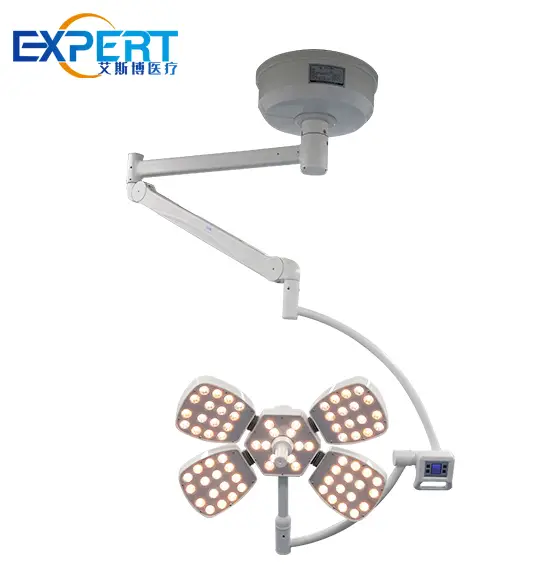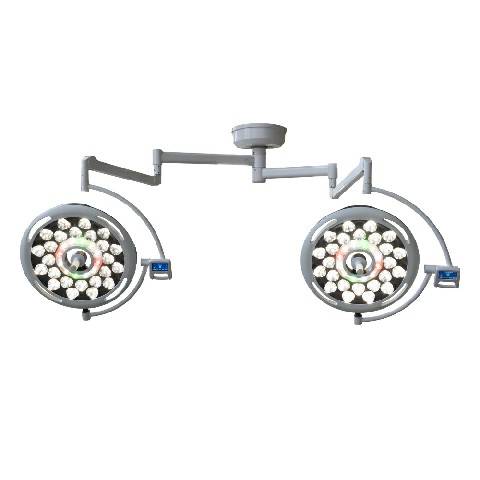Die Anschrift
304 Nordkardinal St.
Dorchester Center, MA 02124
Arbeitsstunden
Montag bis Freitag: 7:00 - 19:00
Wochenende: 10:00 - 17:00
Die Anschrift
304 Nordkardinal St.
Dorchester Center, MA 02124
Arbeitsstunden
Montag bis Freitag: 7:00 - 19:00
Wochenende: 10:00 - 17:00

In diesem Leitfaden erfahren Sie mehr über die Bedeutung einer optimalen Beleuchtung bei Operationen und die Vorteile von LED-Operationsleuchten.
Willkommen auf meinem Blog!
Bevor wir uns in die Inhalte vertiefen, würde ich mich freuen, wenn Sie mir auf meinen Social-Media-Plattformen folgen, wo ich weitere Einblicke gebe, mit der Community interagiere und Updates poste. So können Sie mit mir in Kontakt treten:
Facebook:https://www.facebook.com/profile.php?id=100071234835011
LinkedIn:https://www.linkedin.com/company/74943205/admin/dashboard/
YouTube:https://www.youtube.com/@shandongexpertmedicalequip4695
TikTok:https://www.tiktok.com/@expertmedical
Lassen Sie uns nun gemeinsam unsere Reise beginnen. Ich hoffe, Sie finden die Inhalte hier aufschlussreich, spannend und wertvoll.
In the realm of surgery, precision and clarity are paramount. The success of surgical procedures often hinges on the quality of lighting in the operating room. Surgeons require high-intensity, shadow-free illumination to accurately assess tissues, make incisions, and perform delicate procedures. Traditional halogen lamps have long been the standard in surgical lighting, but advancements in technology have paved the way for LED surgical lamps, which offer numerous benefits over their predecessors. This guide will explore the importance of optimal lighting in surgery, the advantages of LED surgical lamps, and how to choose the right lamp for your surgical needs.

Optimal lighting is crucial in surgery for several reasons. It allows surgeons to see clearly, reduces the risk of errors, and enhances the overall efficiency of the procedure. Poor lighting can lead to shadows, glare, and insufficient illumination, which can compromise the surgeon’s ability to perform with precision. Therefore, the choice of surgical lighting can directly impact patient outcomes.
Key Functions of Surgical Lighting:
Surgical lighting has evolved significantly over the years. Traditional halogen lamps were once the gold standard, providing the necessary brightness for surgical procedures. However, they had several limitations, including high heat output, short lifespan, and limited energy efficiency. The advent of LED technology revolutionized surgical lighting, offering a range of benefits that have made LED surgical lamps the preferred choice in modern operating rooms.
Advantages of LED Surgical Lamps:









One of the most important features of an LED surgical lamp is its brightness. Surgical lamps must provide sufficient light intensity to illuminate the surgical field without causing glare or creating shadows. LED surgical lamps are capable of producing high levels of brightness while maintaining consistent light distribution.
Considerations for Light Intensity:
The Color Rendering Index (CRI) is a measure of how accurately a light source reproduces colors compared to natural light. In surgery, accurate color rendering is crucial for distinguishing between different tissues, identifying abnormalities, and making precise incisions. LED surgical lamps typically have a high CRI, ensuring that colors are rendered accurately.
Importance of High CRI in Surgery:
Table: Comparison of Halogen vs. LED Surgical Lamps
| Besonderheit | Halogen Surgical Lamps | LED Surgical Lamps |
|---|---|---|
| Energieeffizienz | Mäßig | Hoch |
| Lebensdauer | 1,000 – 2,000 hours | 20,000 – 40,000 hours |
| Wärmeabgabe | Hoch | Niedrig |
| Farbwiedergabeindex (CRI) | 80 – 90 | 90 – 98 |
| Verstellbarkeit | Begrenzt | Umfangreich |
| Wartungsanforderungen | Frequent bulb replacements | Minimal maintenance |
Another key feature of LED surgical lamps is their flexibility and adjustability. Surgical procedures often require the light source to be repositioned or adjusted in intensity to accommodate different stages of the operation. LED surgical lamps are designed with these needs in mind, offering a high degree of flexibility.
Flexibility Features:
Durability and ease of maintenance are important considerations when choosing a surgical lamp. LED surgical lamps are known for their long lifespan and durability, which reduces the need for frequent maintenance and replacements. This not only lowers operating costs but also minimizes disruptions in the operating room.
Durability Advantages:

Before selecting an LED surgical lamp, it’s important to assess the specific needs of your surgical facility. Consider the types of procedures performed, the size of the operating rooms, and the preferences of the surgical staff. The right LED surgical lamp should meet the unique requirements of your facility while providing optimal lighting for all procedures.
Key Considerations:
While LED surgical lamps offer numerous benefits, they can also be more expensive upfront compared to traditional halogen lamps. However, the long-term savings in energy costs, maintenance, and replacement bulbs can make LED lamps a more cost-effective option in the long run.
Tipps zur Budgetierung:
Proper installation and integration of LED surgical lamps are critical for ensuring optimal performance. Consider working with experienced professionals to install the lamps and integrate them with existing operating room equipment. Proper installation can help prevent issues such as shadows, glare, and uneven lighting.
Installation Considerations:
LED surgical lamps have revolutionized the way surgeries are performed by providing superior illumination, energy efficiency, and long-lasting performance. Their ability to deliver bright, shadow-free light with accurate color rendering makes them an essential tool in modern operating rooms. By understanding the key features of LED surgical lamps and carefully assessing the needs of your facility, you can choose the right lamp that enhances surgical precision and improves patient outcomes. Whether you’re upgrading your existing lighting system or outfitting a new operating room, investing in high-quality LED surgical lamps is a decision that will benefit both your surgical team and your patients.
What are the key advantages of LED surgical lamps over halogen lamps?
LED surgical lamps offer superior energy efficiency, a longer lifespan, lower heat emission, and better color rendering compared to halogen lamps. They also require less maintenance and provide more adjustable lighting options.
How does the Color Rendering Index (CRI) impact surgical procedures?
A high CRI ensures that colors are rendered accurately, which is crucial for distinguishing between different tissues and identifying abnormalities during surgery. LED surgical lamps typically have a CRI of 90-98, making them ideal for surgical use.
What should I consider when choosing an LED surgical lamp for my facility?
Consider factors such as the types of surgeries performed, the size of the operating room, surgeon preferences, and budget. It’s also important to evaluate the lamp’s brightness, adjustability, durability, and ease of maintenance.
Can the brightness of an LED surgical lamp be adjusted?
Yes, most LED surgical lamps come with adjustable brightness settings, allowing surgeons to customize the lighting to the needs of the procedure.
What should I consider when choosing an LED surgical lamp for my facility?
Consider factors such as brightness, CRI, adjustability, durability, and energy efficiency to ensure the lamp meets the specific needs of your operating room.